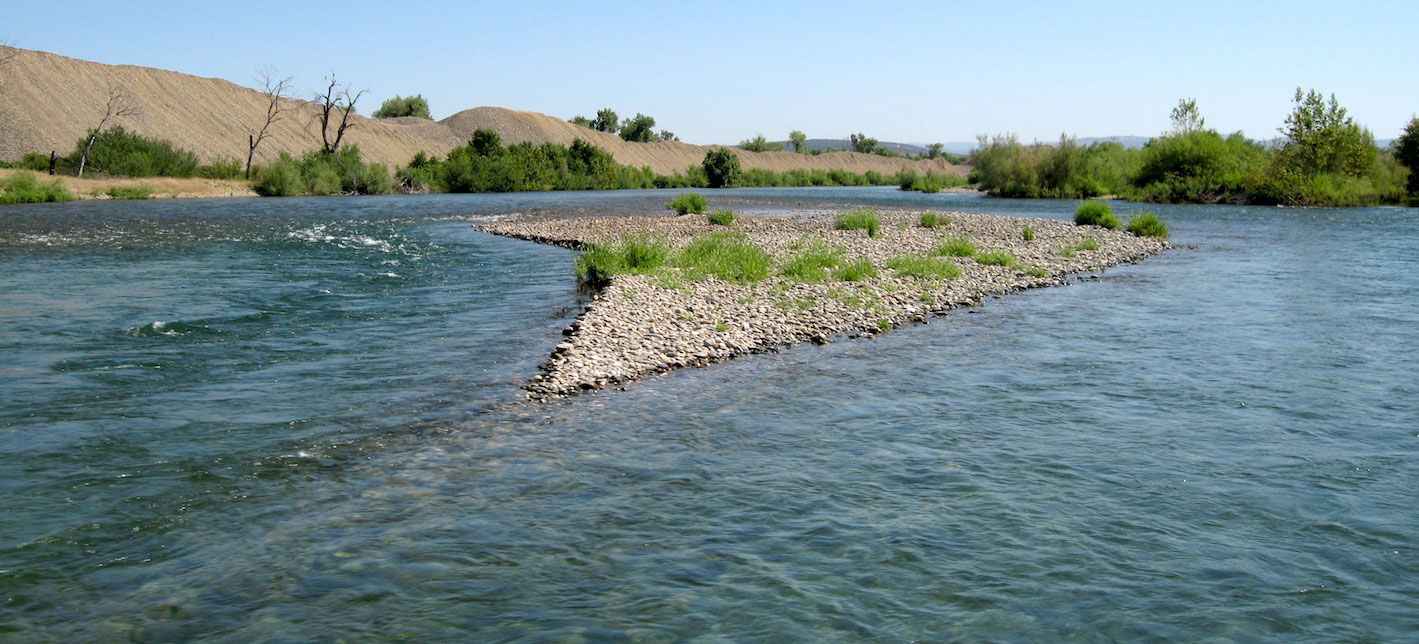North Yuba River
Participants
Jason S Wiener, Gregory B. Pasternack, Joni Gore
Background
Mountain rivers are dynamic places characterized by great variability in hydrologic, geomorphic, and ecological processes and patterns. Comprising ~95% of global rivers, these high-gradient (≥1.5% channel slope) and/or typically lower-order (≤4th order) stream regions are vital in their control of the downstream transport of water, sediment, and nutrients. Despite this abundance, contemporary understanding of morphology, hydraulics, geomorphic processes, and physical habitat conditions in mountain/bedrock river settings are in many ways lacking when compared to better-studied lowland alluvial rivers. Decades of management and countless scientific studies support the position that knowledge of physical processes and interactions between abiotic and biotic system components are critical to understanding current and potential future physical and ecological states of fluvial-riparian systems. Further, systematic frameworks for the quantitative assessment of human impacts on river conditions are lacking and not standard currently exists in the United States.
Purpose
This study bridges a gap in contemporary understating of channel morphology, hydraulics, geomorphic processes, and physical habitat conditions in mountain/bedrock river settings. This was achieved through the examination of Earth surface landforms, geomorphic processes, physical habitat conditions, and linkages between hydromorphic and ecological functions within a regulated boulder-bedrock mountain river. To these ends four specific objectives were identified:
- Map and quantitatively examine channel morphology in a regulated mountain/bedrock river setting and test for indicators of underlying natural organizational processes:
- Test for the presence of previously documented discharge-dependent geomorphic processes known to influence the organization and maintenance of fluvial landforms;
- Quantitatively examine the independent and combined effects of model uncertainty and flow regime on the distribution, abundance, and spatial pattern of high quality physical fish habitat in a regulated mountain river setting; and
- Develop a framework for linking riverine hydro-geomorphic processes with ecological functions to classify functional habitats and quantitatively examine the influence of discharge-dependent fluvial processes on functional habitat.
Methods
A ~13.2 km portion of the Yuba River in Northern California served as the regulated boulder-bedded mountain river used to accomplish the goals of this study. The authors implemented a broad range of tools and analyses incorporating both common, newly emerging, and novel methods in the study of contemporary fluvial geomorphology and ecohydraulics to address the study’s key questions and objectives. New methods used in this study contribute to an emerging framework for geomorphic and ecohydraulic assessment of complex river systems with an impetus on high quality, scientifically based means for exploring the influence of discharge-dependent fluvial processes on habitat abundance and habitat maintenance.
Results
The most important finding from this study was substantial evidence of the importance of high flows in driving observed hydraulic and geomorphic processes. Unlike previous findings, this study found that flows typically exceeding bankfull discharge were most critical for sediment transport and storage, maintaining channel relief, and landform maintenance. This incite was achieved due to the multiple perspectives and methods used to accomplish the geomorphic assessment. Results of the study’s assessment of geomorphic landforms found the current state of the river to be comprised of a complex non-random pattern of unequally distributed channel morphologies. The complexity and diversity of units was much greater than envisioned by traditional classifications of channel morphologies continuing a trend for geospatial exploration of a broader range of landforms. These landforms (i.e., MUs) were spatially organized in a manner suggesting an underlying natural order for self-organization. From the spatial patterns of MUs emerged new landform couplings that break conventional couplings but whose hydromorphic properties remain consistent with existing modes of landform maintenance.
From a physical habitat perspective is was found that channel landforms when coupled with flowing water yielded complex spatially varying hydraulic patterns that produced a diversity of microhabitat conditions across the range of discharges studied. All species/life-stages exhibited strong relationships between discharge and the amount of preferred physical habitat. The temporal abundance of physical habitats was found to be highly dependent on species of interest, stream reach, and flow regime.
Ultimately, findings from this study will enhance current understanding of geomorphic form and process within boulder-bedrock regulated mountain river settings. Methodologically the study will provide further support for the efficacy of 2D hydraulic models to be used as the primary medium through which instream flow assessment and presents new or improved methods for topographic terrain analysis, the investigation of landform structure and riverine processes, as well as for mapping and assessing physical habitat condition in space and through time. Through the ultimate process of relating riverine physical processes with ecological functions the study explores the influence of discharge dependent fluvial-geomorphic processes on habitat abundance and maintenance thereby assessing river conditions holistically from an inter-disciplinary standpoint.
Publications
Wiener, J., Pasternack, G.B. 2018. Geomorphology and Physical Fish Habitats of the Yuba River between New Bulards Bar Dam and Colgate Powerhouse. Prepared for Yuba County Water Agency. University of California, Davis, CA.


